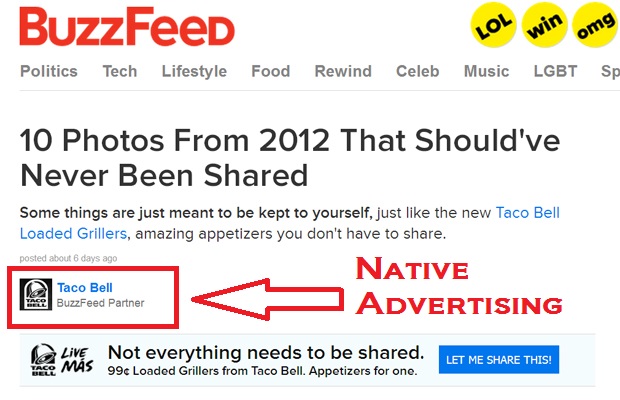As native advertising grows in popularity, new guidelines on how sponsored editorial content is used and labelled for consumers have been launched in the UK.
The Internet Advertising Bureau (IAB UK) has released part one of a set of guidelines to help the marketing industry provide more transparency to consumers around the practice.
The guidelines provide advertisers, publishers, agencies and advertising technology companies with clear and practical steps to make it easier for consumers to spot native advertising – digital ad formats designed to look and feel like editorial content.
Supported by ISBA – the voice of British advertisers – the Association for Online Publishers (AOP) and the Content Marketing Association (CMA), the guidelines meet the UK advertising industry’s CAP code, which is enforced by the Advertising Standards Authority (ASA).
Two of the key guidelines for native advertising formats are:
• Provide consumers with prominently visible visual cues enabling them to immediately understand they are engaging with marketing content compiled by a third party in a native ad format which isn’t editorially independent (e.g. brand logos or design, such as fonts or shading, clearly differentiating it from surrounding editorial content)
• It must be labelled using wording that demonstrates a commercial arrangement is in place (e.g. ‘paid promotion’ or ‘brought to you by’).
Native and content advertising spend¹ – including paid for sponsorships, advertisement features and in-feed distribution – hit £216 million in the first half of 2014, accounting for 21% of display ad spend.
“Paid-for advertising units which are deliberately designed to replicate the look and feel of the editorial content that they appear against needs to be obvious to consumers,” said Alex Stepney, Public Policy Manager at the IAB. “The guidelines help companies involved in developing and publishing such native ad formats to provide the necessary levels of transparency to consumers and uphold the integrity of online advertising.”
The guidelines were based on a study specifically commissioned by the IAB to understand consumer knowledge, attitudes and tolerance to content and native advertising. Conducted by research agency 2CV, it revealed:
• People decide to engage with native content based on (1) how relevant it is to them (2) whether they’ll derive ‘value’ from it, as with editorial content and (3) if it’s clear who it’s from and if they trust the author, brand or publisher
• People’s trust in a brand or publisher can diminish if the origin of the content is unclear
• The characteristics consumers considered ‘good’ in making commercial content clear, such as:
o The advertiser logo being prominent, ideally at the top of the piece of content
o Clear labelling, e.g. ‘sponsored by’. Consumers weren’t so concerned about the exact wording, but did expect to see a label
o Boxing or colours that clearly make native content look visually different to editorial content
• The way consumers ‘filter’ content as being native isn’t necessarily linear but visual clues help them do this immediately.
Ian Twinn, director of public affairs at ISBA, said: “Advertisers welcome this timely and clear guidance on native advertising. ISBA has worked closely with the IAB to produce the guidelines, a further example of advertising self-regulation that delivers consumer transparency around advertiser funding of digital media.”
Tim Cain, the AOP’s Managing Director, said: “The clear delivery of native advertising is the key to positive consumer interest in both the advertiser and the publisher. The guidelines are an important step in driving that clarity.”
Leo Deng, Digital Campaign Manager, Royal London, said: “Advertisers need to provide trust and transparency in their approach to native marketing – ensuring their audiences can easily tell whether or not such content is editorially independent. This practical guidance will undoubtedly help.”
Part two of the guidelines – estimated to be published in Q2, 2015 – will cover online advertorial and sponsored content, including how digital can learn from good practice in print media.
